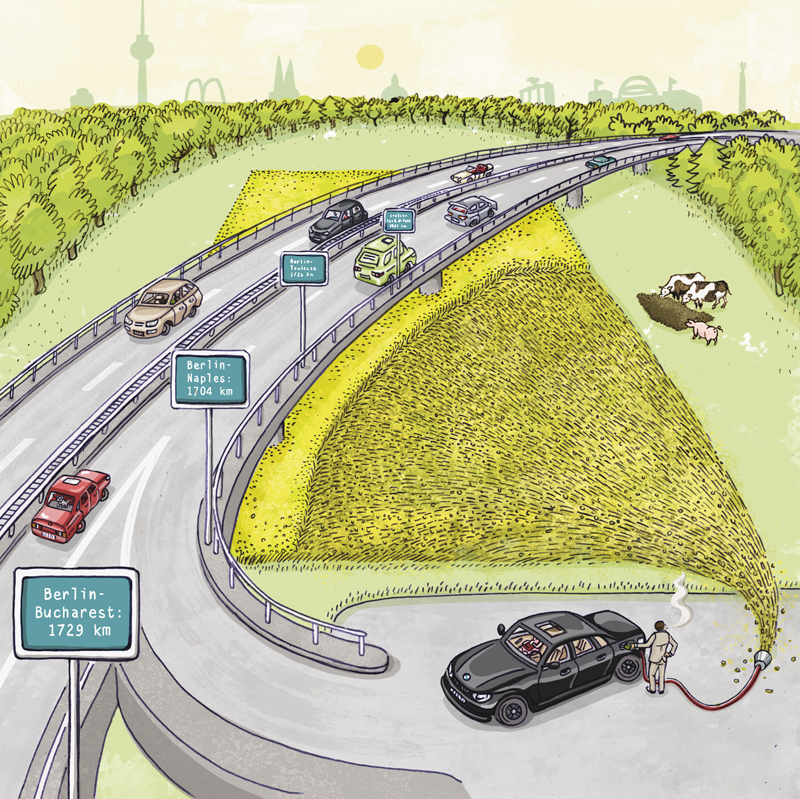将2000平方米上的生物残渣燃烧作为汽车燃料或者发电真的是一个好的或者“气候友好”的主意?如果2000平方米上的欧洲的成熟谷物的平均产量(600公斤)被转化为生物柴油,这些燃油能够让一辆普通的汽车走多远呢?使用柴油引擎的欧洲车油耗为7.1升,因此可以行使约3400公里。只够从柏林到布加勒斯特开一个往返,或者从柏林到那不勒斯,尽管榨油副产品中也会有一些动物饲料,但这将会用尽你2000平方米上供整年使用的东西。
欧盟已经出了规定,要求于2020年,运输部门十分之一的能源来自所谓的“可再生能源”。因此,欧洲内外更多的耕地被用作生产汽车的燃料。从土地生产燃料需要耗费大量的能源并产生温室气体。除此之外,用于生物燃料的耕地经常被以摧毁宝贵的生态系统为代价来获得,例如热带雨林。因此取得的环境效益和传统燃油相比可谓微乎其微,甚至得不偿失。
在德国,五分之一的耕地面积已经用于生产燃料和能源;事实上,如果在德国100公里的油耗量下降1升,那就不需要生物燃料。
链接
![]() (Bio)Fueling injustice? Europe’s responsibility to counter climate change without provoking land grabbing and compounding food insecurity in Africa. EuropAfrica (2011)
(Bio)Fueling injustice? Europe’s responsibility to counter climate change without provoking land grabbing and compounding food insecurity in Africa. EuropAfrica (2011)
![]() Friends of the Earth Europe
Friends of the Earth Europe
– Website on agrofuels offering reports, news in in-depth information on how biofuels are putting growing pressure on land, food and forests
![]() The EU Biofuel Policy and Palm Oil: Cutting subsidies or cutting rainforest? This study finds that the EU consumes 40% more palm oil (for food, fuel and cosmetics) compared to 6 years ago. Palm oil use stands at 20% of the biodiesel mix. IISD (2013).
The EU Biofuel Policy and Palm Oil: Cutting subsidies or cutting rainforest? This study finds that the EU consumes 40% more palm oil (for food, fuel and cosmetics) compared to 6 years ago. Palm oil use stands at 20% of the biodiesel mix. IISD (2013).
![]() Biofuelwatch works to raise awareness of the negative impacts of industrial biofuels and bioenergy on biodiversity, human rights, food sovereignty and climate change
Biofuelwatch works to raise awareness of the negative impacts of industrial biofuels and bioenergy on biodiversity, human rights, food sovereignty and climate change


